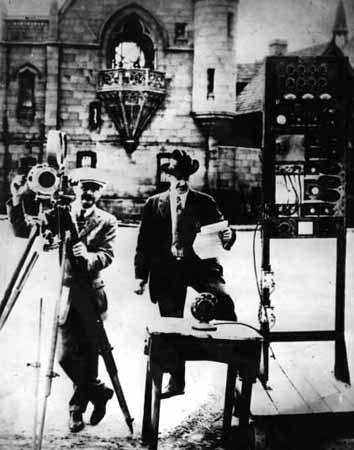
Hailed as the first book on shorts for years in the UK, this ambitious guide is simultaneously a history, a report and a manual, and includes a 'short history of shorts' as well as a comprehensive resource guide. That the authors manage to pull this off in a slim, accessible and eloquent read is testament to their dedication to the form.
The guide's goal is to raise the profile of shorts in Britain so that they are considered both critically and in terms of distribution. Acknowledging the nagging suspicion that there are more people making shorts than people watching them, volume is identified as the greatest threat to satisfactory exposure. The focus here is thus on the making of better films rather than the unearthing of quick-fix structural solutions, a refreshing position which, though it may sound evident, is not commonly shared in the industry. To their credit the authors explore this notion from all possible angles, assessing the role of founders and distributors with the same degree of scrutiny as they bring to the filmmakers themselves.
In one particularly intelligent chapter the book addresses the key issue of the relationship between funding and creativity, a pivotal point in an era of risk aversion. How can innovative, experimental projects be sold to founders and commissioners whose evaluation is often based on traditional assessment criteria, such as a completed script? What role can the founders play in nurturing the creative partnerships between writer, director and producer?
On one side, the authors will encourage the founders to remember the vulnerability of ideas and the difficulty in mapping out the creative process in ticked-boxes and bullet points, while on the other, they will incite filmmakers to treat the process as a liberating rather than stifling framework. The interviews serve as brilliant illustrations of the complicated but not always difficult relationships that some accomplished filmmakers have with commissioners and funding bodies.
The particularities of the 'digital era' referred to in the book's title are studied throughout the guide, and their relevance is brought to light in the fields of production and post-production, but also – crucially – in distribution and exhibition. In keeping with the book's measured optimism and realistic approach, the authors are quite prepared to contradict one of their interviewees – in this case Damien O'Donnell – and express reservations about the digital revolution and its role as the cement of a sustainable British short film industry.
The authors' realistic, multi-faceted approach is infused with enough knowledge, experience and enthusiasm to make this a recommended read for all involved – practitioners and commissioners, founders and distributors – as well as any lover of the medium.
Ripina Nguyen

No comments:
Post a Comment